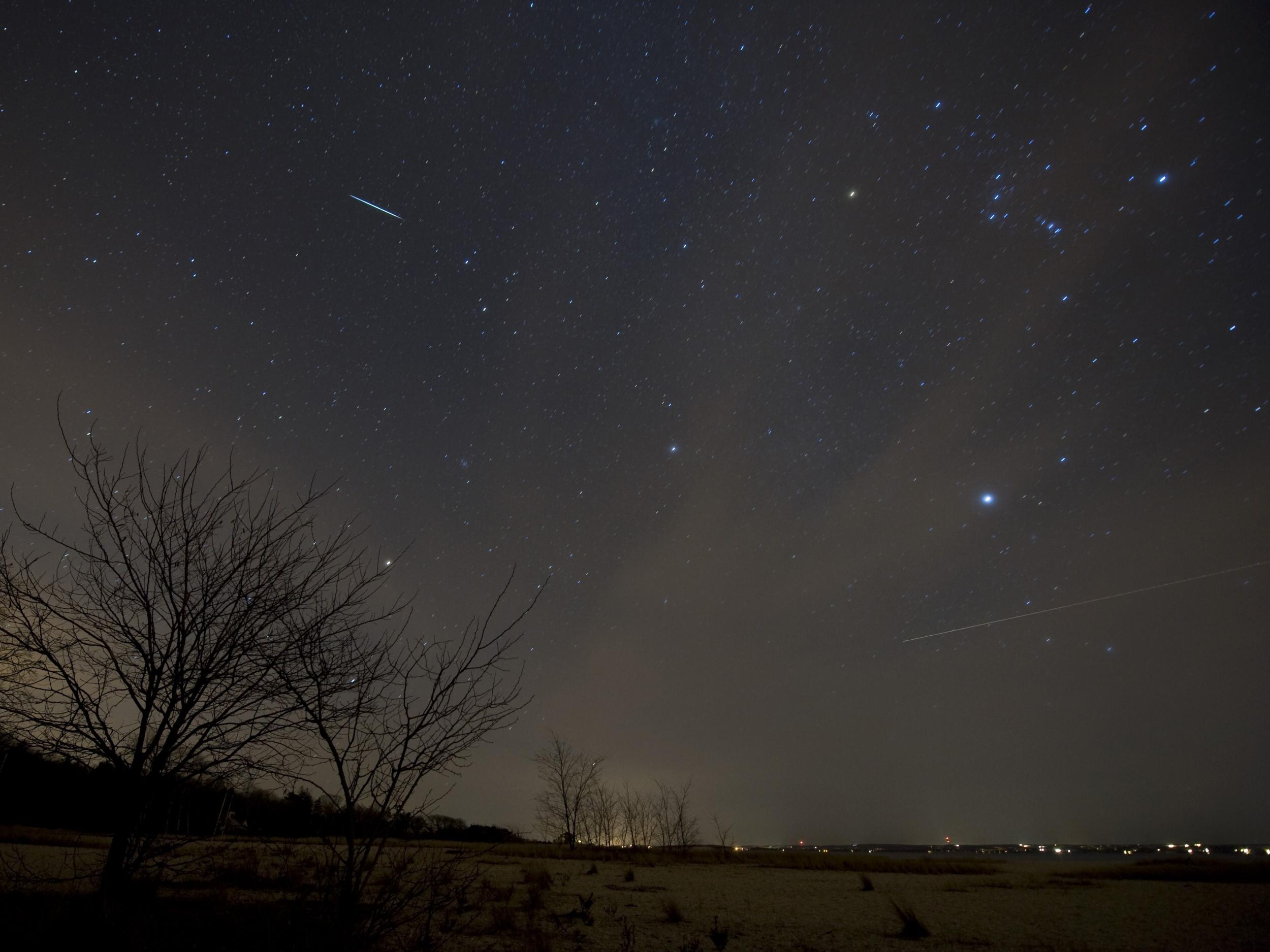Geminid Meteor Shower: What it is and how to see it
The best and brightest meteor shower of the year could be ruined by December's 'supermoon'

One of the year's most prolific and most reliable meteor showers is due this week, but unhappily it is expected to peak on Tuesday night, when it will coincide with an unusually bright full moon.
Astronomers say December's "supermoon" will light up the night sky, diminishing the appearance of shooting stars.
However a few of Geminid's brightest meteors may overcome the glare, so it is still worth keeping an eye on the celestial light show.
What is the Geminid Meteor Shower?
A meteor is any small rocky or metallic body from outer space that enters Earth’s atmosphere and becomes incandescent as a result of friction, appearing as a streak of light across the night sky.
Meteors, sometimes referred to as shooting stars, often arrive in a group, causing a meteor shower.
Some meteor showers happen annually at the same time each year, including the Geminids.
Every December, Earth crosses the orbital path of a “rock comet” asteroid called 3200 Phaethon.
Swinging close to the sun has caused the asteroid's rocky body to crack and crumble, and to shed rubble into its orbital stream. This debris falls into Earth’s upper atmosphere as the comet passes by, and vaporises as colourful meteors.
If you trace the paths of the Geminid meteors backward, they all seem to originate in the Gemini star constellation, giving the shower its name.
NASA says Geminid is one of the best and most reliable meteor showers. At its peak, 120 meteors can be seen per hour under perfect conditions.
What is the best way to see the Geminid Meteor Shower?
Unluckily, this year, the peak point in the shower coincides with a supermoon, which could make all but the brightest meteors invisible to the naked eye.
But some are still expected to be bright enough to see.
For those who want to get the best possible view of the shower, NASA recommends heading somewhere away from the city and all artifical lights, to a wide-open space with a good view of the sky. Stargazers do not need any special equipment to see the shower, they said.
It does not really matter where in the world you are — the Geminids are best in the Northern Hemisphere, but the shower is visible from the Southern Hemisphere too.
The shower will peak between the evening of 13 December (Tuesday) and dawn on 14 December (Wednesday), but the nights before and after might be good as well.
Geminid meteors tend to be few and far between in the early evening, but increase in number later at night. However the evening is the best time to see a rare “earthgrazer” meteor, one which skims the top of Earth's atmosphere like a stone skipping across the surface of a pond.
The Gemini constellation will reach its highest point for the night at around 2am (local time, wherever you are) so this is when the shooting stars will appear most centered in the sky and when the most are likely to appear at once.
Experts caution stargazers not to give up too easily: it can take about 20 minutes for human eyes to properly adjust to the dark, and meteors often come in spurts, interspersed with lulls.
Join our commenting forum
Join thought-provoking conversations, follow other Independent readers and see their replies
Comments
Bookmark popover
Removed from bookmarks